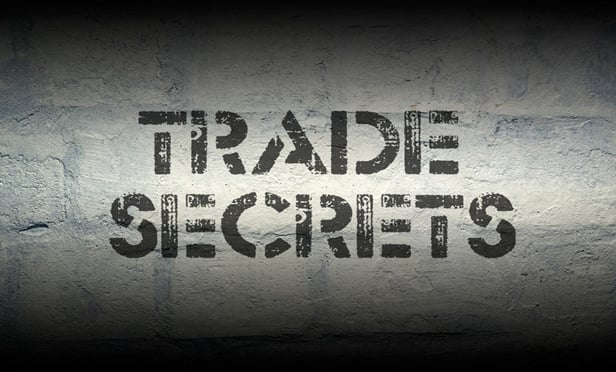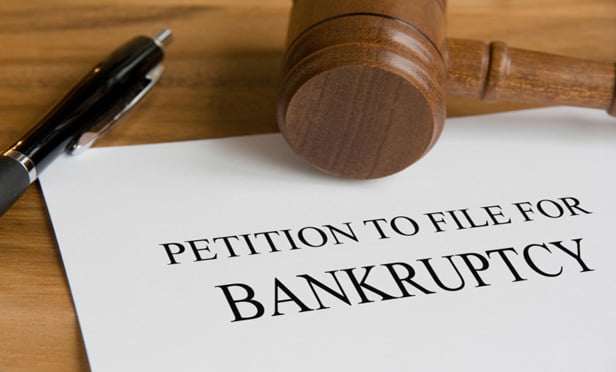Columns & Departments
Upcoming Webinar
Join Board of Editors member Kyle-Beth Hilfer, Editor-in-Chief Howard Shire, Aaron Krowne and Wenew GC Christine Lawton for Counseling the NFT Client: A Practical Guide to Legal and Business Issues.
Features

WTF? The Board Weighs In on Failure to Function Refusals
Many trademark practitioners have noted the USPTO's recent penchant for issuing refusals to register trademarks on the ground of failure to function as a trademark. The Trademark Trial and Appeal Board picked a colorful case to set precedent and provide some initial guidance on how it will evaluate failure-to-function refusals going forward.
Features

Criminal Considerations and Federal Authorities In Trade Secrets Disputes
Part Two of a Three-Part Series Part One of this article discussed the passing of the Economic Espionage Act to combat the growing concerns surrounding trade secret theft and the criminal components of trade secret theft. Part Two covers considerations in favor of approaching federal authorities on trade secrets theft.
Columns & Departments
IP News
Federal Circuit: No Patent Term Adjustments When Claims Change Federal Circuit: Proceeding Need Not Be Terminated Upon Request
Features

Criminal Considerations In Trade Secrets Disputes
Part One of a Three-Part Series When the international theft of U.S. trade secrets escalated and became a higher priority for domestic entities, trade secrets owners faced difficult challenges in collecting evidence, pursuing civil actions against overseas actors, and successfully obtaining worthwhile and meaningful relief from civil actions alone. These challenges ultimately resulted in increased referrals, investigations, and prosecutions of trade secrets theft under the EEA by federal authorities.
Features

Pondering AI Machine Learning and Copyright Fair Use
By feeding machine-learning models hundreds of copyrighted pictures to train them to identify and "read" certain concepts, companies could face violating copyright laws.
Features

Duty of Candor and Good Faith With the USPTO Covers Non-Inventors and Non-Practitioners
Practitioners and non-practitioners that are associated with the examination of patents and patent applications should be vigilant about information that may be material to patentability to avoid having an issued patent be deemed unenforceable.
Features

Supreme Court Set to Hear Transformativeness Fair Use 'Warhol' Case
In the October 2022 Term, the Supreme Court is set to decide whether courts assessing transformativeness under the first fair-use factor of the Copyright Act may consider "the meaning of the accused work where it 'recognizably deriv[es] from' its source material." The case may profoundly affect the fair use analysis, and in turn, the scope of copyright protection for many works.
Columns & Departments
IP News
Federal Circuit: Trade Dress Imitation In the Ninth Circuit
Features

Protecting a Trademark Licensor's Rights In Its Licensee's Bankruptcy Case
A recent bankruptcy case from the District of Delaware underscores the need for a trademark licensor to be alert to filings made in its licensee's bankruptcy case that may require prompt action by the licensor to protect its valuable rights under a license agreement.
Need Help?
- Prefer an IP authenticated environment? Request a transition or call 800-756-8993.
- Need other assistance? email Customer Service or call 1-877-256-2472.
MOST POPULAR STORIES
- The DOJ's New Parameters for Evaluating Corporate Compliance ProgramsThe parameters set forth in the DOJ's memorandum have implications not only for the government's evaluation of compliance programs in the context of criminal charging decisions, but also for how defense counsel structure their conference-room advocacy seeking declinations or lesser sanctions in both criminal and civil investigations.Read More ›
- The DOJ's Corporate Enforcement Policy: One Year LaterThe DOJ's Criminal Division issued three declinations since the issuance of the revised CEP a year ago. Review of these cases gives insight into DOJ's implementation of the new policy in practice.Read More ›
- Use of Deferred Prosecution Agreements In White Collar InvestigationsThis article discusses the practical and policy reasons for the use of DPAs and NPAs in white-collar criminal investigations, and considers the NDAA's new reporting provision and its relationship with other efforts to enhance transparency in DOJ decision-making.Read More ›
- Don't Sleep On Prohibitions on the Assignability of LeasesAttorneys advising commercial tenants on commercial lease documents should not sleep on prohibitions or other limitations on their client's rights to assign or transfer their interests in the leasehold estate. Assignment and transfer provisions are just as important as the base rent or any default clauses, especially in the era where tenants are searching for increased flexibility to maneuver in the hybrid working environment where the future of in-person use of real estate remains unclear.Read More ›
- Developments in Distressed LendingRecently, in two separate cases, secured lenders have received, as part of their adequate protection package, the right to obtain principal paydowns during a bankruptcy case.Read More ›
